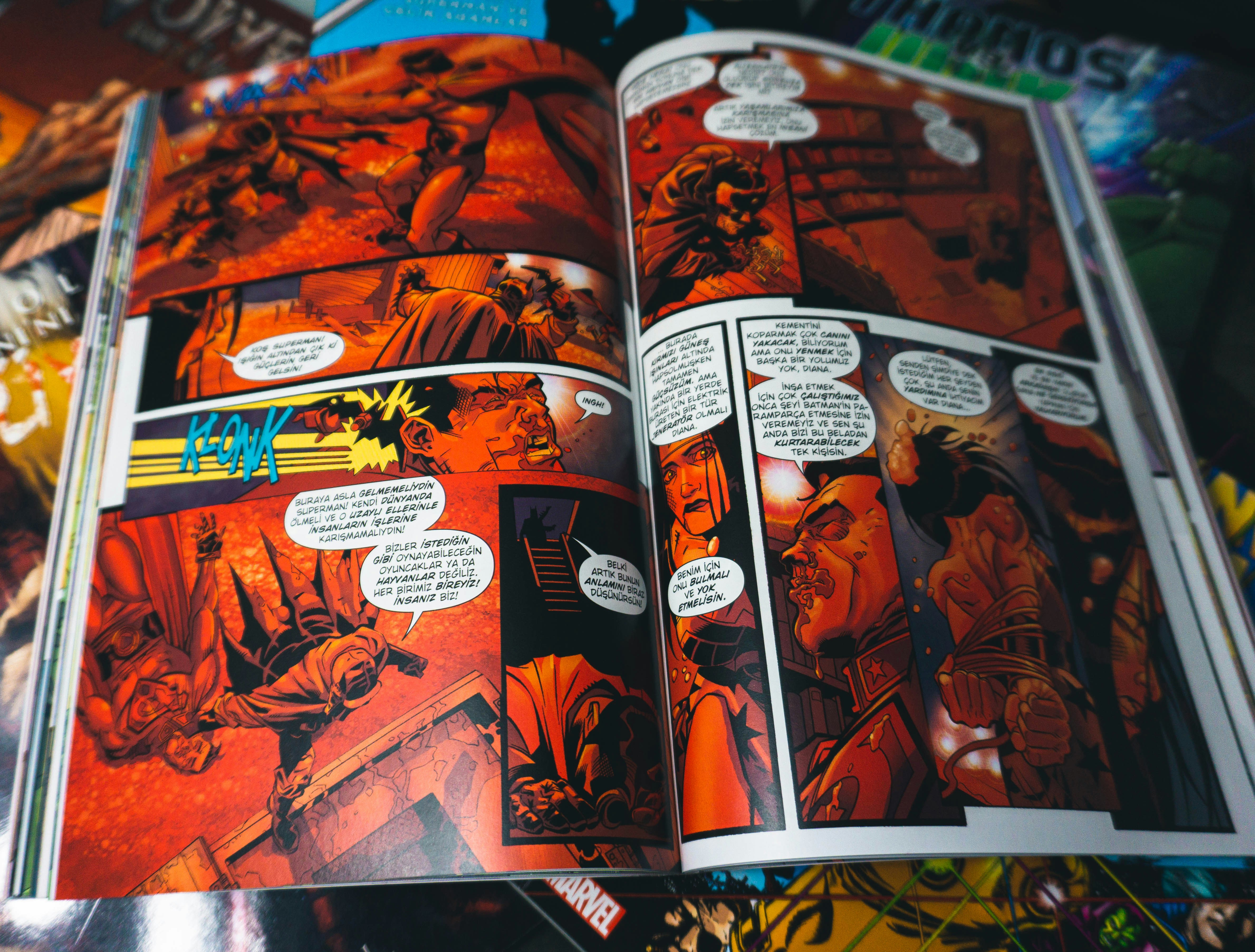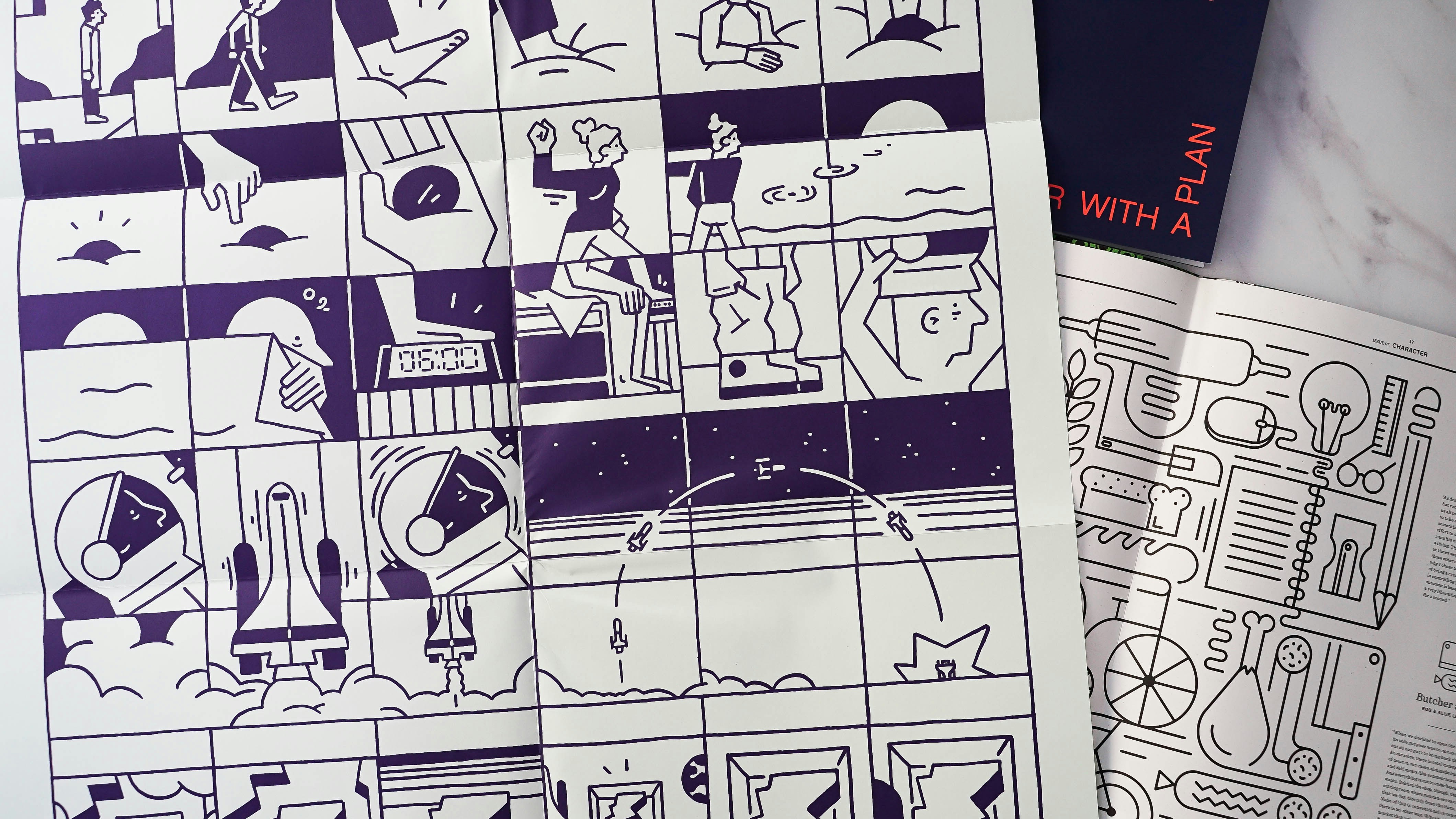How to Make Comics: A Step-by-Step Tutorial for Beginners
by WriteSeen
Creating comics is an extraordinary journey, blending artistry and storytelling into an experience unique to this medium. Whether you're crafting your first panel or refining a series, understanding how to make comics can turn your vision into a riveting narrative.
Our guide explores:
- How to make comics from initial idea to finished book.
- The magic of gutter space that invites reader imagination.
- Designing characters that resonate through visual storytelling.
Embark on this creative adventure with us.
Understanding the Basics: What Makes a Comic?
Great comics balance narrative and visual elements. Our journey begins here—where words meet art. A comic blends text, imagery, and timing to create an engaging experience. Let's break it down further.
Key Elements of a Comic
Understanding these elements is essential. Each plays a crucial role in storytelling.
- Panels: These are the windows into your universe. They frame moments that drive the plot.
- Gutters: The spaces between panels. They let readers imagine action and time.
- Text: Speech balloons, thought bubbles, and captions deliver dialogue and context.
- Art: The visual style sets tone and mood, complementing the narrative.
Using Panels and Text Effectively
A successful comic is more than just good art and writing—it's the synergy between them. Thoughtful layout guides the reader, while concise text captures attention without overstating. Avoid crowding panels with dialogue; let your art speak.
Comics offer a unique narrative freedom, unlike any other form—unleashing creativity and inviting reader interaction.
Embrace this freedom. Your story can leap genres, from fantastical worlds to personal vignettes. Use these elements to engage readers, keeping them invested through both sight and story.

Developing Your Comic Idea: From Concept to Plotline
Your comic starts with an idea. Make it vivid and compelling by shaping it into a well-rounded plotline. Here's how.
Generating and Refining Your Comic Concept
Every story begins with a spark—a central "what if" that fuels the narrative. Your concept is the heart of your comic, so make it count. Explore these steps:
- Jot down every idea. Anything goes at this stage.
- Identify the core theme. What's your message?
- Visualize your genre. Fantasy? Sci-fi? Realistic drama?
- Develop a strong world. This supports your story and gives it life.
Crafting Your Plot and Characters
Turn your concept into an immersive plot. This involves outlining your story arc, complete with engaging characters.
- Character Creation: For each character, write backstories and traits. Consider their goals and conflicts.
- Plot Structure: Map key events. Use arcs like 'The Hero’s Journey' to guide progression.
- Subplots: Introduce subplots for depth and explorative growth. Keep them relevant.
Focus on development as your concept evolves. With these elements, your comic will captivate and resonate with readers.
Crafting the Script: Dialogue, Panels, and Pacing
A strong script is the backbone of a great comic. It dictates not only dialogue but also pacing and panel structure. Let’s explore how to nail this balance.
Writing Dialogue and Descriptions
Scriptwriting in comics is precise—each word must carry weight. Follow these tips for effective, engaging writing:
- Dialogue: It should be sharp, natural, and purposeful. It propels the story forward.
- Descriptions: For each panel, provide clear notes without stifling the artist's creativity.
- Pacing: Control story flow with carefully chosen page layouts and panel arrangements.
Clarity is key. Aim for scripts that stimulate the reader's imagination while providing sufficient direction.
Pacing and Panel Structure
Pacing impacts how readers experience your comic. Use pacing techniques to keep narratives lively and suspenseful:
- Varied panel sizes: Introduce tension or calm by adjusting panel dimensions.
- Cliffhangers: End sections on cliffhangers to increase engagement.
- Repetition: Use repetitive structures for rhythm or emphasis.
A well-paced script ensures smooth transitions and retains reader interest from start to finish.
Designing Your Characters: Visual Storytelling through Art
Character design is an art form in itself. It’s not just about aesthetics; it's about telling a story visually. Let's delve into the design process.
Creating Compelling Character Designs
Characters are the heart of your world. Their design directly influences how readers connect with your comic. Focus on these elements:
- Silhouette: Ensure each character has a unique outline. It's crucial for instant recognition.
- Costumes: Clothing should express personality and fit the story’s context.
- Expressions and Body Language: These elements convey emotion and subtle cues, enriching the narrative.
Be consistent with design choices. This maintains immersion and makes each character memorable.
Every line and color choice is a form of visual storytelling, deepening reader engagement and weaving the narrative into a compelling experience.
Drawing and Developing Depth
Beyond static images, characters need depth—achieved through visually-driven backstories and development:
- Show character growth visually, using changes in attire or expressions.
- Reflect emotions in postures and actions.
- Modify designs to parallel character arcs as the story progresses.
As characters evolve, so does reader investment. Through design, readers discover layers, further enhancing narrative richness.
Mastering Layout and Composition: Effective Use of Panels
The layout plays a pivotal role in guiding reader experience. Every panel's placement and size dictate narrative flow and emotional impact. The art of layout transforms static images into dynamic storytelling.
Panel Techniques for Engaging Layouts
Crafting a captivating layout starts with understanding how panels affect story perception:
- Varied Panel Sizes: Larger panels draw attention, emphasizing key moments. Smaller ones quicken the pace.
- Gutter Space: Use the space between panels to suggest time passing or to create suspense.
- Reading Path: Direct the reader's journey across the page for a seamless narrative experience.
Effective layouts capture readers, drawing them into the world while enhancing engagement.
Composition and Reader Interaction
In comics, composition is interaction. It feels purposeful and alive:
- Balance and Focus: Arrange elements to guide reader focus, leveraging light, shadow, and positioning.
- Foreground and Background: Play with depths to create immersive scenes, enhancing story layers.
- Dynamic Angles: Use angles to evoke emotions and add intensity to scenes.
Remember, composition is your canvas for storytelling. It’s where text, art, and emotion converge.
Control reader gaze with strategic composition—ensuring every glance is laden with story and intent.
Inking and Coloring: Bringing Your Art to Life
With lines and colors, your comic transforms quickly into a vivid narrative. These elements inject life and texture, deepening the connection between readers and your story world.
The Art of Inking
Inking defines image clarity and mood. It's pivotal for tonal control:
- Line Weight: Vary weight to suggest movement and draw focus. Heavier lines for emphasis; lighter for subtlety.
- Textures: Use cross-hatching and stippling to add depth and dimension, making scenes more palpable.
- Contrast: Incorporate contrast to distinguish focal points, guiding reader attention effectively.
Inking provides structure, setting the stage for color’s transformative touch.
Creating Impact with Color
Colors breathe emotion into comics. They’re essential for setting the mood and affecting reader perception:
- Color Palette: Choose palettes purposefully. Warm tones evoke energy; cool tones settle and calm.
- Atmospheric Effects: Use gradients and lighting to provide mood shifts and time-of-day cues.
- Emotional Resonance: Align colors with character emotions, adding layers of understanding.
Colors can shift narrative direction, elevating storytelling to a higher plane.
The Publication Process: From Draft to Print (or Digital)
Once your comic is complete, it's time to share it with the world. Whether opting for print or digital, understanding the publication process ensures your comic reaches its audience effectively.
Navigating Publishing Options
Each publishing avenue offers unique benefits and challenges. Consider your goals and resources when choosing:
- Traditional Publishing: Offers credibility and distribution but often requires relinquishing some creative control.
- Self-Publishing: Guarantees creative freedom and financial responsibility. You control distribution and marketing.
- Digital Platforms: Deliver wide reach with virtually no overhead. Easily engage global audiences.
Evaluate these paths in light of your vision for your comic's reach and legacy.
Prepping for Launch
Preparation is critical. Ensuring your comic is polished and professionally presented is key. Focus on these areas:
- Editing and Proofing: Meticulously review your work for continuity, consistency, and errors.
- Formatting: Adapt your comic for different formats, ensuring it looks great in print and online.
- Promotion: Utilize social media and platforms like WriteSeen to build anticipation and community beforehand.
Success in publication stems from clarity of vision and dedication to quality.
Building a Readership: Marketing Your Comic
Once published, the next step is building an audience. Effective marketing bridges the gap between your comic and its readers, ensuring your story receives the attention it deserves.
Marketing Strategies for Creators
Creative and strategic marketing is crucial. It taps into reader desires and enhances visibility:
- Social Media Engagement: Share progress, artwork, and insights to build anticipation and connect with readers personally.
- Collaborate and Cross-Promote: Work with other creators to expand reach and share audiences.
- Festivals and Conventions: Gain exposure by attending and showcasing your work at these events.
Building an audience requires consistent effort and genuine connection—it’s about fostering relationships, not just pushing sales.
Leveraging Our Platform
At WriteSeen, we provide a hub for creators to showcase comics. Engage with an eager audience ready to discover your work:
- Create engaging project pages that highlight your comic’s unique aspects.
- Collaborate with artists and writers who complement your style.
- Benefit from feedback and critiques to refine and elevate your work.
Community engagement is a powerful tool in building readership and refining your art.
Conclusion
Learning how to make comics opens the door to endless creativity and storytelling potential. By mastering the basics of paneling, character development, and layout composition, you create more than just art—you craft experiences that captivate readers. Every choice you make brings your story closer to life, making the journey as rewarding as the final product.
Building your skills in how to make comics is an evolving process, from early sketches to finished pages ready to share with the world. Through practice, refinement, and the courage to experiment, you turn imagination into vivid narratives that connect across genres and audiences. Passion and persistence fuel your ability to transform ideas into compelling visual stories.
Join WriteSeen to showcase your work, collaborate with fellow comic creators, and discover new ways to refine your craft. Our creative community is here to support your journey, helping you bring your comics to life with confidence, connection, and inspiration.
TAGS
